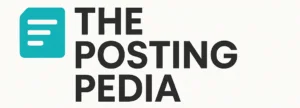Introduction
A well-embroidered logo elevates your brand’s professionalism—whether it’s on uniforms, hats, or promotional merchandise. But simply uploading your logo to an embroidery machine won’t guarantee great results. The key lies in properly digitizing your logo for embroidery, a technical process that converts your design into a precise stitch pattern machines can follow.
When you digitize logo for embroidery, you’re essentially creating a roadmap of stitches—determining their type, direction, density, and sequence. This process requires specialized skills and software to ensure your logo stitches out cleanly without distortion, gaps, or thread breaks. Factors like fabric type, thread selection, and stitch underlay all play crucial roles in the final result.
This comprehensive guide walks you through everything you need to know about preparing your logo for digitizing, from optimizing your source file to selecting the right stitches and stabilizers. You’ll learn professional techniques to transform any logo into a crisp, durable embroidery design that maintains brand integrity across various applications. By the end, you’ll understand how to digitize logos for embroidery like a pro or how to effectively communicate with digitizing specialists for perfect results every time.
1. Understanding Embroidery Digitizing
Embroidery digitizing transforms a digital image into a file (like PES, DST, or EXP) that tells an embroidery machine where to place stitches. Unlike printing, embroidery involves:
- Stitch types (satin, fill, running stitches).
- Thread tension and density.
- Fabric compatibility.
A poorly digitized logo can result in gaps, thread breaks, or distorted shapes, so getting this step right is crucial.
2. Preparing Your Logo for Digitizing
2.1 Start with a High-Quality Image
The better your source file, the cleaner the embroidery will be. Ideal formats include:
- Vector files (AI, EPS, SVG) – Scalable without quality loss.
- High-resolution PNG/JPG (300+ DPI) – If vectors aren’t available.
❌ Avoid:
- Blurry or pixelated logos.
- Overly complex designs with tiny details.
2.2 Simplify the Design
Embroidery has limitations compared to print. Simplify your logo by:
- Removing gradients (use solid color blocks instead).
- Enlarging small text (letters under 0.2 inches may not stitch clearly).
- Combining overlapping elements to reduce stitch count.
2.3 Choose the Right Colors
- Match thread colors to your brand’s Pantone or CMYK values.
- Limit the palette—too many thread changes slow production.
3. Digitizing Your Logo: Key Steps
3.1 Manual vs. Auto-Digitizing
| Method | Pros | Cons |
|---|---|---|
| Manual Digitizing (Professional software) | Highest precision, customizable stitches | Requires skill, time-consuming |
| Auto-Digitizing (AI tools) | Fast, affordable | May need manual fixes, less detail |
For best results, hire a professional digitizer or use advanced software like Wilcom or Hatch Embroidery.
3.2 Choosing Stitch Types
- Satin Stitch – Smooth, shiny finish (ideal for text and borders).
- Fill Stitch – Solid coverage for large areas.
- Running Stitch – Outlines and fine details.
3.3 Setting Stitch Direction & Density
- Direction affects texture—align stitches with the design’s shape.
- Density (stitches per inch) should balance durability and fabric flexibility. Too dense = stiff fabric; too loose = gaps.
3.4 Adding Underlay Stitches
Underlay stabilizes the design before top stitches are added. Common types:
- Edge Run – Outlines shapes.
- Zigzag – Adds stability for fill stitches.
- Center Walk – Prevents fabric puckering.
4. Testing and Refining the Design
4.1 Stitch Out a Sample
Before mass production:
-
Embroider on scrap fabric (same material as final product).
-
Check for:
- Thread tension issues.
- Misaligned elements.
- Color accuracy.
4.2 Common Fixes
- Puckering? Reduce stitch density or add stabilizer.
- Thread breaks? Adjust tension or shorten stitch length.
- Blurry details? Simplify complex areas.
5. Choosing the Right Fabric & Thread
5.1 Fabric Considerations
| Fabric Type | Best For | Tips |
|---|---|---|
| Cotton Twill | Hats, polos | Holds stitches well |
| Polyester | Sportswear | Wrinkle-resistant |
| Denim | Jackets, bags | Durable but needs sharp needle |
Avoid stretchy fabrics unless using cut-away stabilizer.
5.2 Thread Types
- Polyester – Strong, colorfast (best for most logos).
- Rayon – Shinier but less durable.
- Cotton – Soft but fades faster.
6. DIY vs. Professional Digitizing
6.1 When to DIY
- You have simple logos (basic shapes, minimal text).
- You’re willing to learn software like Ink/Stitch or Embrilliance.
6.2 When to Hire a Pro
- Your logo has fine details, gradients, or small text.
- You need bulk orders with consistent quality.
Cost: Professional digitizing ranges from $10–$50 per design, but saves time and materials in the long run.
7. Top Software for Logo Digitizing
7.1 For Beginners
- Embrilliance Essentials ($139) – User-friendly, good for basic designs.
- SewArt ($70) – Auto-digitizing with manual tweaks.
7.2 For Professionals
- Wilcom Hatch ($1,000+) – Industry standard for precision.
- Brother PE-Design 11 ($500) – Great for Brother machine users.
7.3 Free Options
- Ink/Stitch (Open-source, works with Inkscape).
- MyEditor Online (Web-based, limited features).
8. Common Mistakes to Avoid
❌ Ignoring fabric type (designs behave differently on knit vs. woven fabrics).
❌ Skipping the test stitch-out (wastes time and materials if errors appear later).
❌ Overlooking thread tension (too tight = puckering; too loose = loose stitches).
9. Final Tips for Perfect Logo Embroidery
✅ Start simple – Elaborate designs need expert digitizing.
✅ Use high-quality thread – Cheap thread breaks and fades.
✅ Communicate with your digitizer – Provide clear notes on sizing and colors.
10. Conclusion
Turning your logo into a flawless embroidery design requires proper digitizing, fabric selection, and testing. Whether you DIY with software or hire a professional, following these steps ensures crisp, professional results every time.
Ready to stitch your brand’s identity onto apparel? Start with a well-digitized file, and your logo will look sharp, durable, and truly custom.





